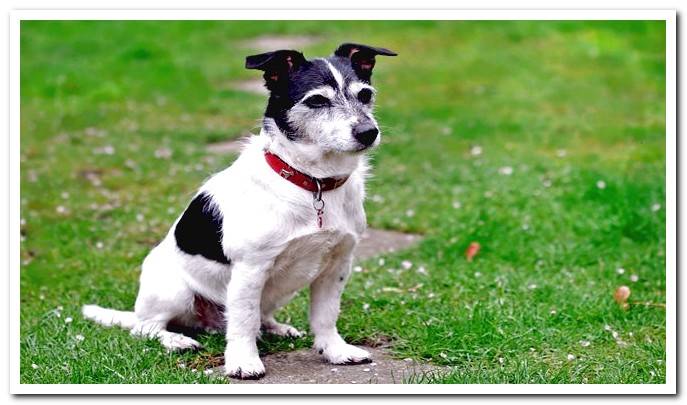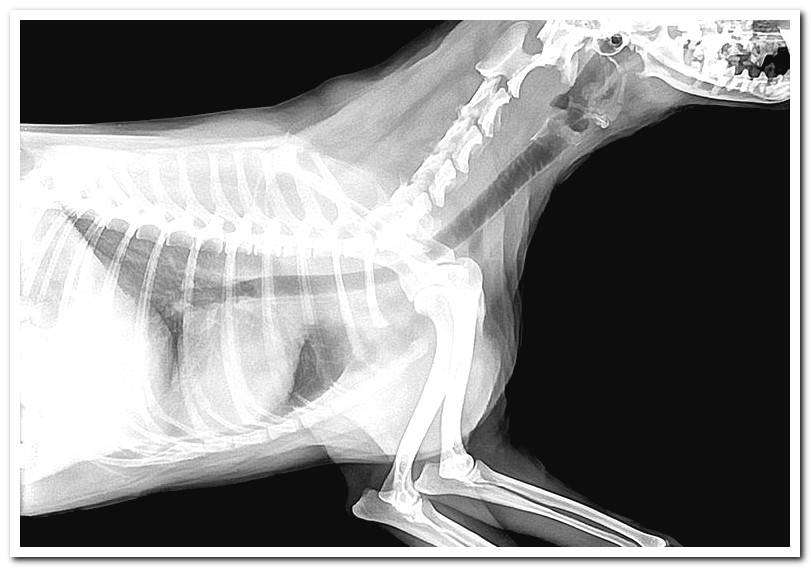
Is your furry man unable to sit correctly, does he not want to go for a walk as before or shows signs of pain when getting up? Don’t ignore these signs: it could be cauda equina syndrome in dogs.
Take note of the main symptoms of this disease, the most common treatments and tips to prevent or alleviate it.
Index of contents
- 1 What is cauda equina in dogs?
- 2 How and why does this ailment occur?
- 3 Treatments for cauda equina
- 4 Tips to prevent or alleviate it
What is cauda equina in dogs?
The cauda equina refers to a syndrome that affects the lumbar and sacral vertebrae, which are the closest to the tail of the dog.
Narrowing of the spinal canal compresses the roots of the spinal nerve, so this clamping causes pain and difficulty moving normally. Over time this can lead to a herniated disc.
Although it is more frequently developed by medium and large dogs – especially German shepherds, boxer shorts and rottweilers-, the small dogs they can also have it. This condition reduces the mobility of our furry and their quality of life.
How and why does this ailment occur?
One of the first symptoms that should put us on alert is when we see that the dog has more and more difficulties to rejoin from the rest position.
In addition, a dog with cauda equina problems:
- You will have less desire to carry out activities that require physical effort
- Lameness in one or both hindlimbs
- You may suffer from fecal and / or urinary incontinence.
- Signs of pain in the lumbar and sacral region. This could cause changes in his character and problems of aggressiveness.
- Weakness or paralysis in the tail and / or in the pelvic area, which can lead to a loss of muscle mass.
The truth is that there are many causes that can provoke the appearance of this syndrome. Many times it is due to congenital anomalies that appear from birth, but it can also be an ailment acquired as a result of a fracture or dislocation.
Dogs with hip dysplasia, for example, can develop such problems in the lower spine.
On the other hand, in advanced ages it is common to attribute it to spondylosis, which is the formation of bone spurs in the vertebrae, or to the presence of tumors or infections.

Treatments for cauda equina
In order to correctly treat the cauda equina in the dog, it is important that the specialist make an accurate diagnosis that allows us to know what is causing this syndrome and rule out other diseases with similar symptoms, such as dysplasia.
After a first physical examination and a complete biochemical profile that includes urine and blood tests, the veterinaryn usually performs various tests such as x-rays, computed tomography or MRI to know which treatment is the most appropriate.
In addition, you should take into account the age of the dog and the severity of the symptoms. When the cause is infectious, antibiotics and other medications such as anti-inflammatories or pain relievers will be prescribed. to alleviate the pain.
In cases where this more conservative type of treatment does not work, surgical intervention may be chosen to decompress the affected nerve roots.
Tips to prevent or alleviate it
In order to relieve cauda equina syndrome in dogs, it is essential to always follow the recommendations of the professional who treats your furry. You must be consistent with the medication and the reviews.
In cases where the dog cannot regain its mobility, the use of chondroprotectors or special harnesses can be of great help to have the best quality of life possible.
Physical therapy also works very well, so you should seek advice and find a good specialist in your area.
Prevent your adventure partner from playing rough, jumping and racing. Make it continue, finally a proper diet so you don’t have obesity problems. Otherwise your physical condition could worsen, something that we want to prevent at all costs.
If there is something that you should take into account is that early detection will be key to control this degenerative problem. So you should pay attention to any symptoms that appear and do not hesitate to take it to the specialist if you see something that makes you doubt. In this way it will be easier to stop or alleviate the effects of this disease.
